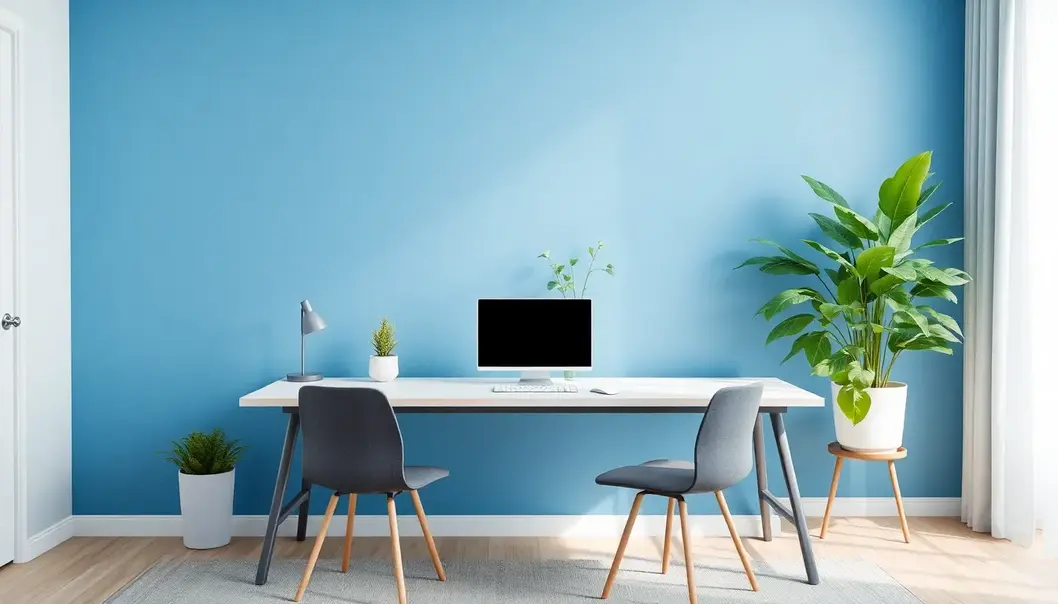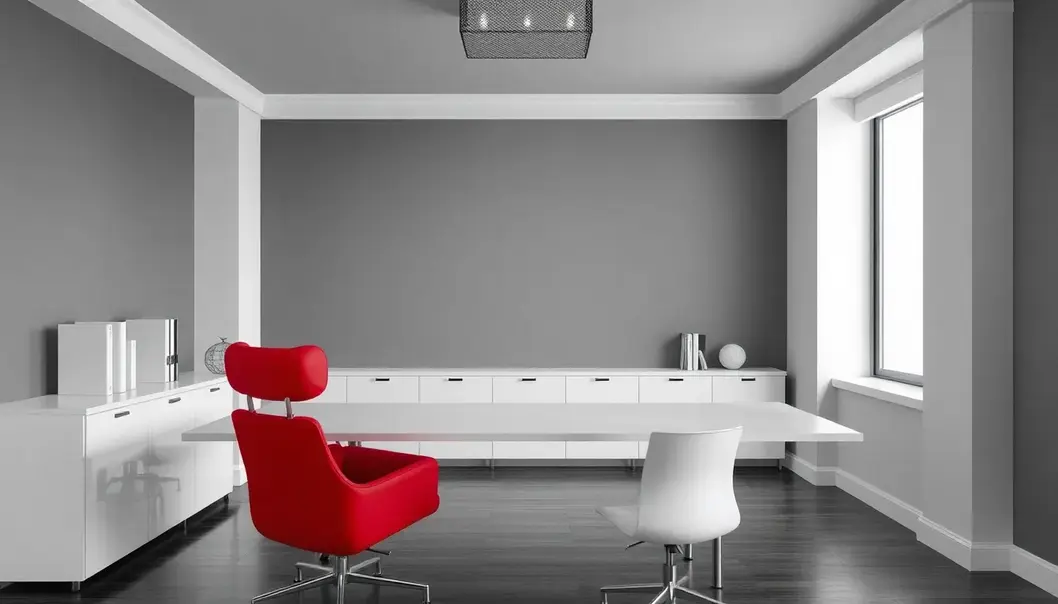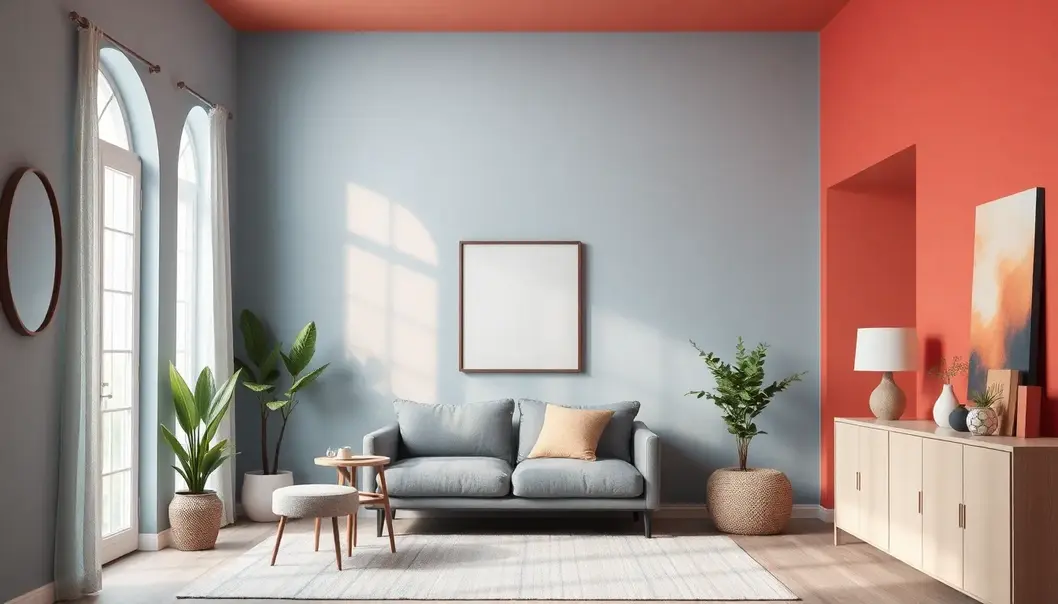Color is more than just a visual element; it’s a powerful tool in interior design that significantly affects mood and functionality. Amid hectic schedules and constant deadlines, understanding the psychological impact of colors can transform a mundane workspace into a haven of peace and productivity. Professionals can harness the nuances of color theory to curate environments that foster concentration and relaxation. Whether refreshing a home office or a corporate setting, a thoughtful approach to color can re-energize and soothe, offering a subtle yet profound influence on daily life.
Understanding Color Psychology

The study of color psychology reveals the profound impact colors have on human emotions and behaviors. Different hues can evoke a diverse range of feelings, which interior designers harness to create desired atmospheres in various spaces.
Cool colors, such as blues and greens, are noted for their calming and peaceful effects. Blue, for instance, is often associated with tranquility and trust, making it a popular choice for bedrooms and spaces intended for relaxation or reflection. Green, tied to nature and renewal, promotes relaxation and is ideal for areas aiming to relieve stress, reinforcing a sense of balance and refreshment.
In contrast, warm colors like reds and oranges elicit more energetic and stimulating responses. Red often signifies passion, excitement, and action, making it suitable for areas intended for social interaction, such as dining and living rooms. Orange, combining the energy of red and the cheerfulness of yellow, is known for inspiring enthusiasm and creativity, making it a great choice for spaces designed to foster innovation and lively discussions.
Neutral tones, including whites, grays, and beiges, offer versatility as they provide a serene backdrop that can help maintain balance in professional settings. They allow other colors to stand out while not overwhelming the senses, which makes them an effective choice for office spaces where focus and productivity are key objectives.
By strategically applying color psychology, professionals can tailor interior environments to support daily activities and mental wellbeing. For instance, using calming cool tones in a home office could heighten concentration and reduce anxiety, while integrating warm accents can inspire creative thinking and motivation. Neutral palettes in meeting rooms might encourage unbiased discussion and clear thinking. Thus, understanding and utilizing color psychology enables designers to cultivate environments that align with their objectives, enhancing both mood and functionality.
Practical Application of Color Schemes

Color schemes form the backbone of interior design, offering a wide array of possibilities to transform spaces into harmonious environments. Monochromatic schemes focus on variations within a single hue, creating a soothing and unified look. For instance, a bedroom can benefit greatly from a monochromatic blue palette, using various shades and tints to establish a calming retreat that promotes rest. The subtle shifts in color intensity inject depth without overwhelming the senses.
Complementary color schemes, on the other hand, harness the power of contrast. These involve colors opposite each other on the color wheel, such as blue and orange or red and green. The high contrast between the colors invigorates spaces like living rooms or kitchens, where energy and vitality are welcome. A kitchen designed with blue cabinetry and orange accents not only enlivens the room but also highlights its features while maintaining equilibrium through thoughtful scaling and placement of each color.
Analogous schemes consist of colors that sit next to each other on the color wheel, such as yellow, yellow-green, and green. These schemes are ideal for creating serene and comfortable spaces, perfect for living areas or reading nooks. They provide a gentle gradation of color that is easy on the eyes and fosters an inviting atmosphere. For instance, a living room with varying shades of green, complemented by touches of yellow accents, provides freshness and continuity.
Successfully balancing colors to achieve both aesthetic appeal and functionality necessitates the strategic use of accent colors. Accents can emphasize specific areas and draw attention to particular features within a room. In a predominantly gray office space, vibrant accents like yellow chairs or bold artwork introduce energy without disrupting the overall professional tone.
When coordinating color schemes, it is crucial to consider both natural and artificial lighting conditions, as these can dramatically alter color perceptions. Test colors under different lighting conditions to ensure they harmonize as intended. The aim is to support the intended emotional and practical needs of the space, ensuring occupants feel both calm and stimulated as necessary.
Through meticulous consideration and creative application of color schemes, designers can craft interiors that resonate with their occupants’ needs while maintaining a seamless and professional aesthetic.
Final words
Mastering the use of color theory in interior design offers profound benefits in creating spaces that are both inviting and inspiring. By understanding how colors affect mood and productivity, professionals can tailor their environments to better suit their needs, enabling them to thrive in both personal and career endeavors. Whether seeking calm or stimulation, the strategic use of color provides a foundation for a harmonious lifestyle.
Empower your space with the perfect color palette today. Visit our website to find expert tips and consultation services.
Learn more: https://www.colorfocusdesign.com/expert-tips
About us
Color Focus Design specializes in tailored interior solutions, offering consultations and workshops to help professionals integrate color theory into their spaces. By leveraging the latest in psychological research, we provide actionable insights to optimize environments for productivity and relaxation.



